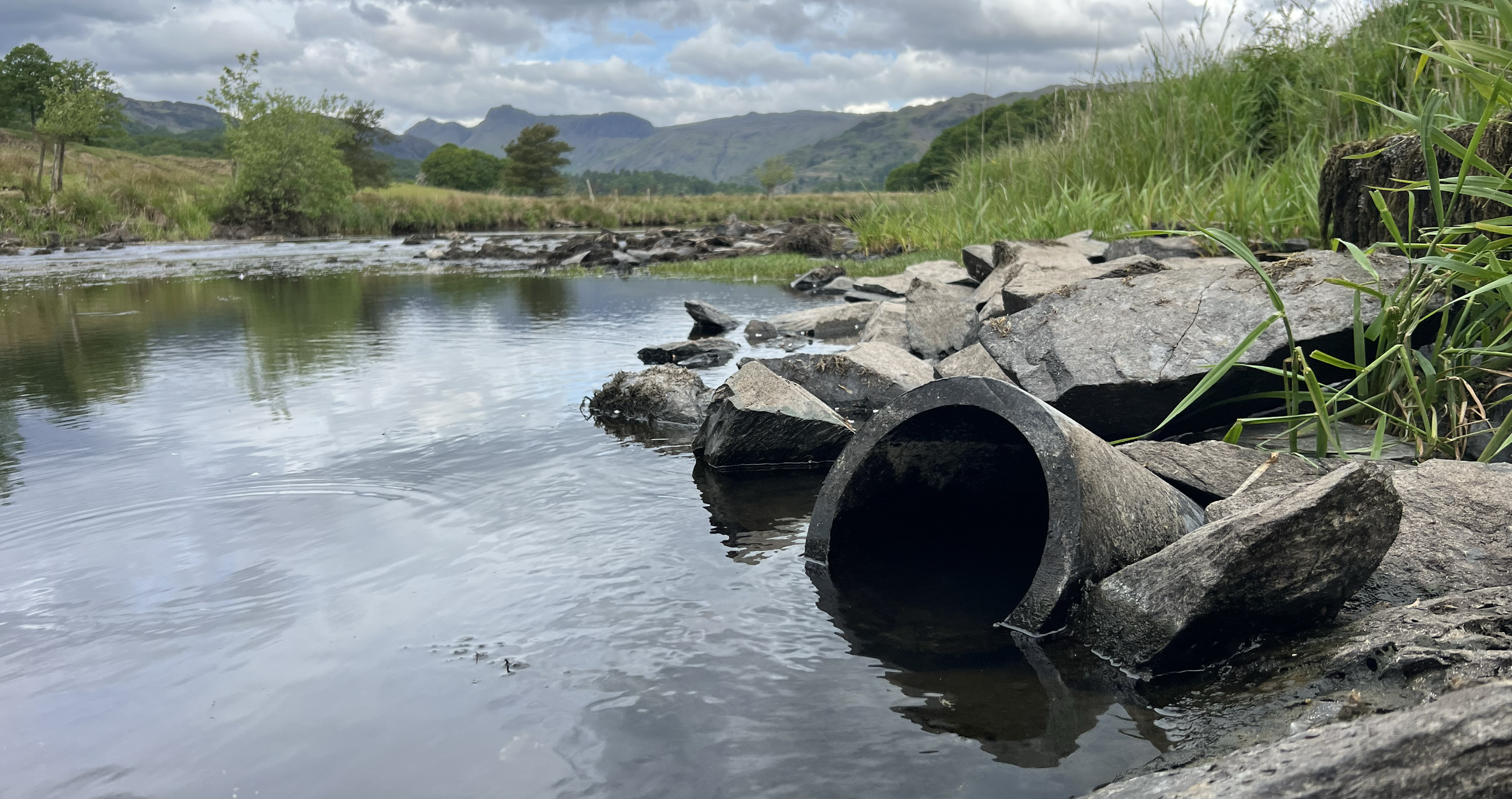An Environmental Disaster Waiting to Happen
Last year, we raised the alarm after several dead toads were found near the treated outfall of the Langdale Wastewater Treatment Works. Deeply concerned, we launched a water monitoring programme in partnership with Ambleside Action for a Future (AAFAF), who have been leading the sampling efforts, stepping in to fill the gap left by an ineffective regulator.
The outfall was featured in Save Windermere’s film An Upstream Battle, which highlighted its historical impact on Elterwater SSSI in the 1990s. At the time, the site was the primary source of eutrophication in the three-basin lake, contributing to a major fish kill. Shockingly, there has been no technological investment at the site for over a decade – a failure we believe is driving the ongoing harm we’re witnessing today.
AAFAF have been sampling the outfall weekly, using the same monitoring devices employed by United Utilities to monitor pollution events, and reporting elevated ammonia levels to the Environment Agency each time they occur. The site’s permit does not currently require United Utilities to limit ammoniacal nitrogen and thus there is no technical breach of permit. However, it is clear that the permit itself is also unfit for purpose in the 21st century and urgently needs to be updated.
Since 5 March, our testing has revealed alarming results:
70% of samples have exceeded 10 mg/L of ammoniacal nitrogen
30% have exceeded 20 mg/L
To put this in context: under the right climatic conditions, low flow, high temperatures, and rising pH from let's say an algal bloom, concentrations as low as 7–8 mg/L of ammoniacal nitrogen in effluent can trigger toxic ammonia levels in rivers, leading to severe fish kills.
And yet, incredibly, the permit for this treatment works contains no ammonia discharge limit at all. This glaring omission exposes a serious failure of regulatory oversight – one that puts Windermere and its fragile river systems at continued risk.
These ecosystems are already on the brink. Climate change has brought the driest spring in 70 years to the North West, with river levels at historic lows. In such fragile conditions, a single major discharge or system failure could trigger mass fish deaths and cause catastrophic harm to local wildlife. Although the rain has now come, a lucky escape for United Utilities, the next drought could be just around the corner. And this is just one of eight sewage treatment works discharging in the Windermere catchment, which makes us deeply concerned about what this summer may bring.
Labour committed to ending sewage pollution in Windermere, yet we’ve seen no action to make that pledge legally binding. The threat to Windermere is urgent and worsening, especially under the pressure of climate change. If Keir Starmer’s government is serious about delivering on its commitment, he should come to Windermere and see firsthand how England’s largest lake is being exploited by a predatory water company.


